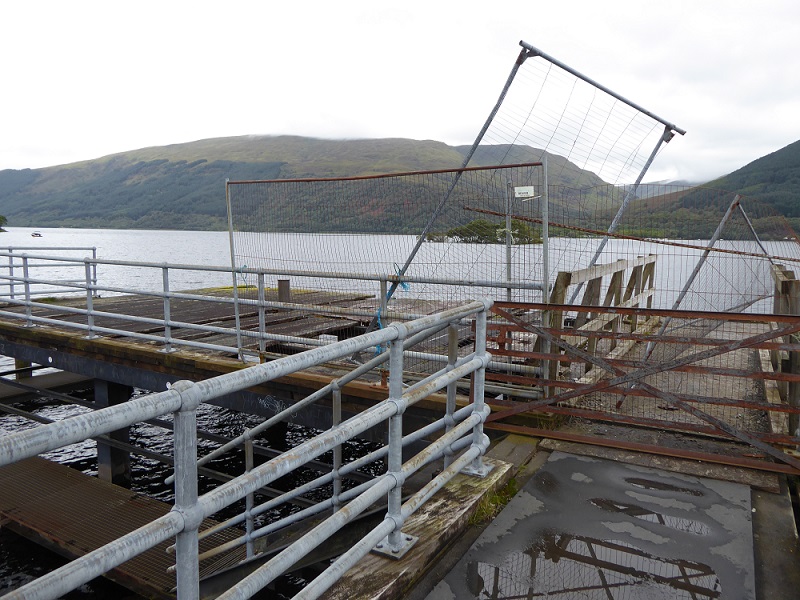
Two weeks ago I spoke to the Loch Lomond and Trossachs National Park Authority Board (see here) about the urgent need to consider improved visitor infrastructure over the winter as a consequence of the Covid-19 pandemic. More specifically, I tried to draw attention to deficiencies in papers on Visitor Management and Litter Prevention that were due to be considered later in the meeting (see here for papers).. Board Members listened and asked some good questions but when it came to considering the papers later, despite a couple of searching questions, they approved them without amendment.
A National Park in financial meltdown
This was no doubt partly because of the gaping financial hole that has opened up under the LLTNPA. A deficit of £398,000 is now forecast for the end of the financial year. The LLTNPA Board is frightened to commit to any further spend over the winter that would increase the size of the hole.
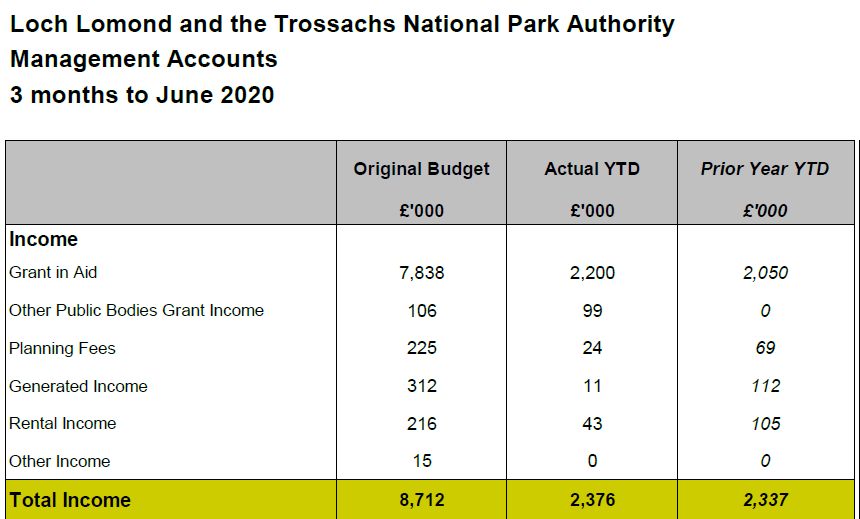
During lockdown, income from planning, “generated income” such as camping permits, boat launching fees and rent collapsed. Instead of arguing for the resources it needed, under its previous Chief Executive Fiona Logan, the LLTNPA adopted a commercial strategy. The big idea was to raise enough money through commercial ventures to keep itself going. Most of these ventures had been singularly unsuccessful even before the corona crisis.
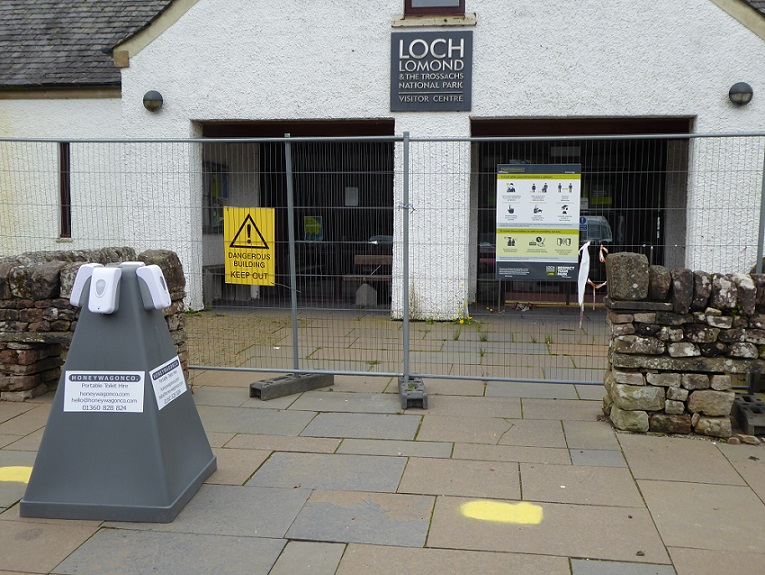
The LLTNPA is far from being the only public authority that has tried to turn itself into a business to balance its books, but its failure to articulate what resources were really needed has been really exposed over the summer.
While part of the LLTNPA’s £398k projected deficit has been caused by additional “seasonal” expenditure caused by the boom in staycations, this was only £180k at the time of the Board Meeting, not a large amount of money given the very large numbers of people visiting the National Park. The projected deficit is also based on some of the “additional” provision for visitors continuing into October and starting again in March. When asked, however, by Board Members about demand over the winter months, their Chief Executive replied that visitor numbers usually drop at this time and that if not, Park staff would “flex” to respond to circumstances.
Visitor numbers and provision over the winter
Ironically, just as Nicola Sturgeon was announcing new restrictions last week which will drive record numbers of people into the countryside over the winter, the LLTNPA issued an email to “stakeholders” (see here) setting out its winter plans. The challenge should be obvious. Banned from meeting others inside their own homes to prevent the spread of Covid-19, most people will want to continuing meeting others at a safe physical distance somewhere else. While some will be prepared to go to pubs and restaurants, large numbers will prefer to stay outdoors. With sitting around in parks or gardens becoming less attractive by the day, larger numbers than ever before will decide to go for a walk or a cycle ride in the countryside over winter. They will need facilities.
When and where people visit will of course be to an extent weather dependent, but even on less good days recently there have been large numbers of people in the National Park.
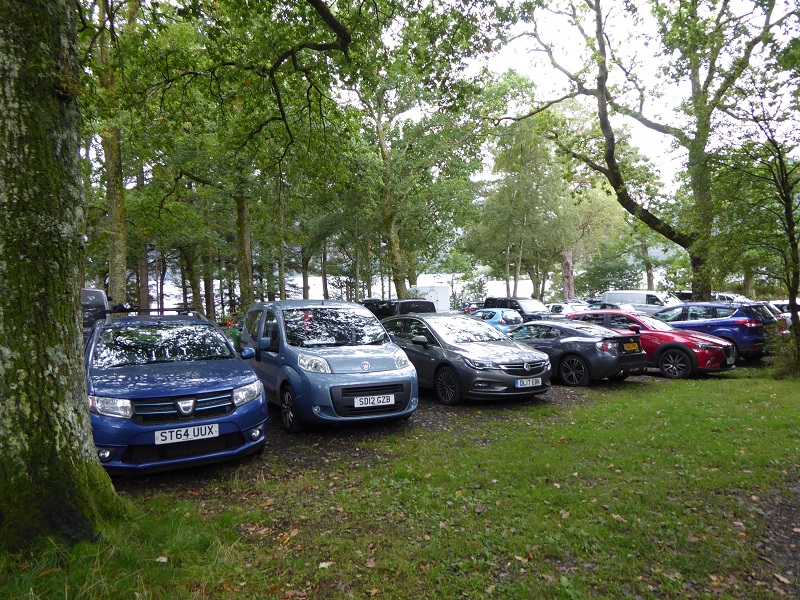
The current proposals from the LLTNPA are that the continued influx of visitors will be met by their normal winter service, or lack of it. This means closed toilets, closed campsites, fewer waste collections and far fewer rangers on the ground. The consequence is that the LLTNPA is facing not just a financial hole but a continued visitor disaster.
Current failures in infrastructure provision on east Loch Lomond
The rest of this post will illustrate that disaster with examples from east Loch Lomond.
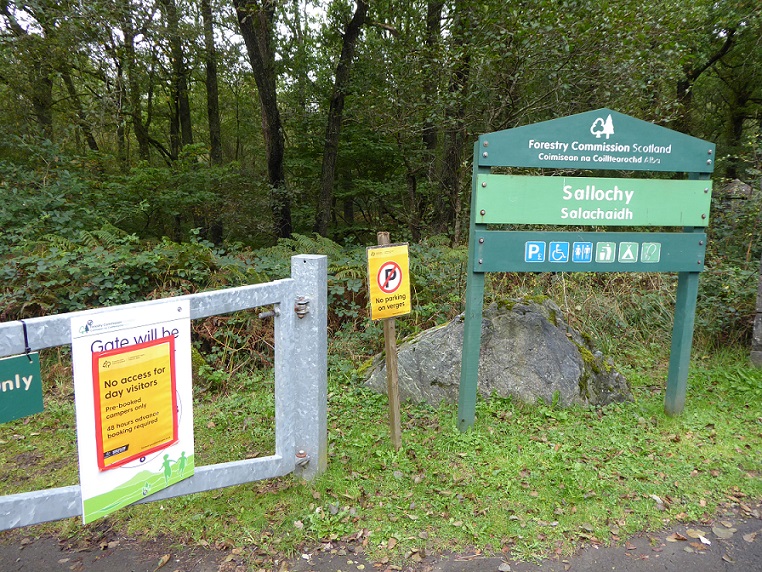
While I have been aware that the LLTNPA has, with Stirling Council and Police Scotland, been involved in closing the road to Rowardennan because of lack of parking capacity, I had not realised that part of the traffic chaos had been caused by Forest and Land Scotland. Why, when FLS announced in July it had re-opened most of its car parks across Scotland, it has kept Sallochy closed is not clear. It fits, however, with the management frame of mind that believes it is easier to ban people rather than provide them with infrastructure to enjoy the countryside.
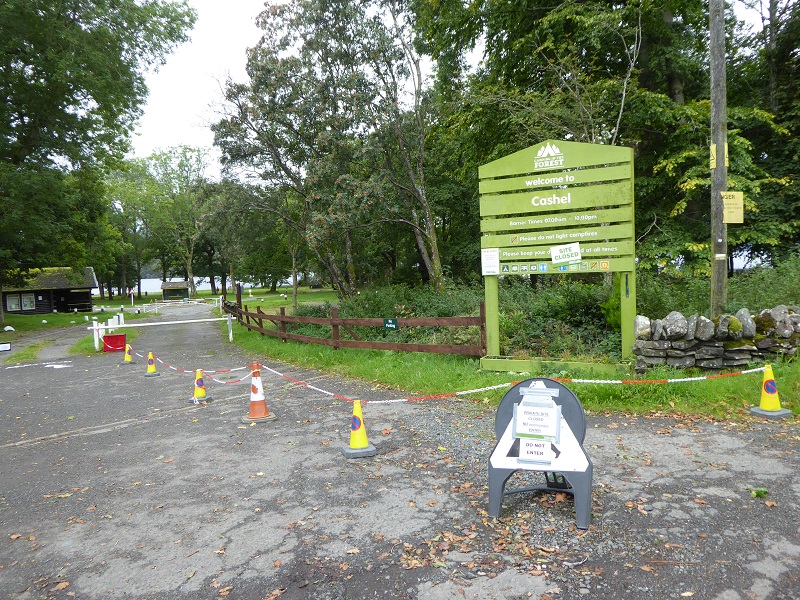
Before Sallochy, is the Camping in the Forest campsite at Cashel which is shut till next year. Like Glenmore campsite in the Cairngorms, it is owned by Forest and Land Scotland and leased to a company called Camping in the Forest (see here). The LLTNPA Board paper on visitor management failed to say anything about the consequences of the closure (see here for impact on Glenmore), but the loss of 168 places will have contributed to the large increase in numbers roadside camping elsewhere. It will also have had a significant impact on walkers of the West Highland Way since camping outwith designated areas in the east Lomond camping management zone now a criminal offence. Either Park Rangers will have harassed backpackers, destroying Scotland’s tourist reputation, or they will have turned a blind eye, creating obvious equity issues when record numbers of people have been charged for breaking the camping byelaws elsewhere in the National Park.
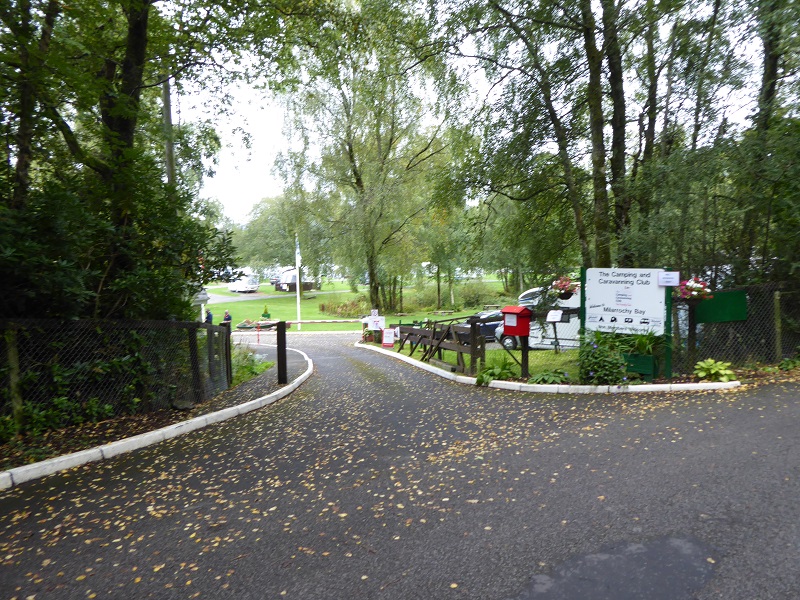
Camping in the Forest is owned by the Camping and Caravanning who have kept their site at Milarrochy Bay next door OPEN! There is clearly no justification for the Cashel campsite closure and Forest and Land Scotland, who provide a Director for Camping in the Forest, should be terminating their 75 year lease. Meantime, until alternative management can be put in place, the Cashel campsite could have provided the answers to many of the car parking problems on east Loch Lomond. Why couldn’t the LLTNPA have been calling for this?
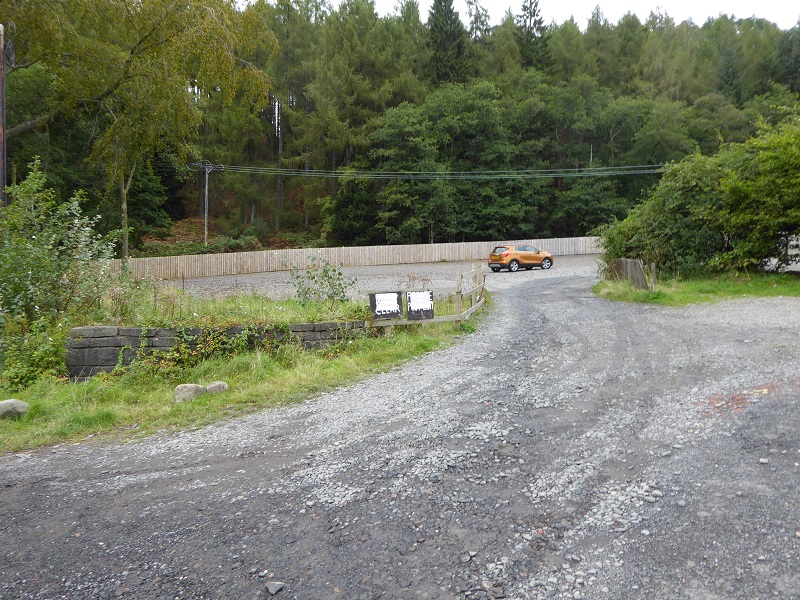
Parking capacity along east Loch Lomond has been gradually reduced over the last ten years, with various pull-offs blocked by boulders. In the absence of public transport, capacity had reached crisis point even before this summer which is why the Oak Tree Inn earlier this year applied for temporary planning permission for an overflow car park at Balmaha.
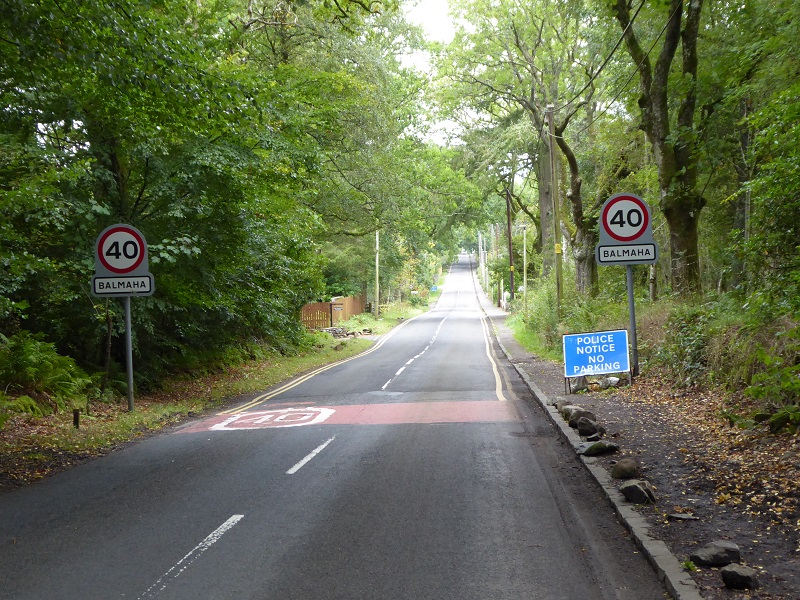
With proper planning, most of the traffic problems on east Loch Lomond could have been prevented but instead, when people arrived to find the road closed, they headed off to other areas like Strathard, creating chaos there.
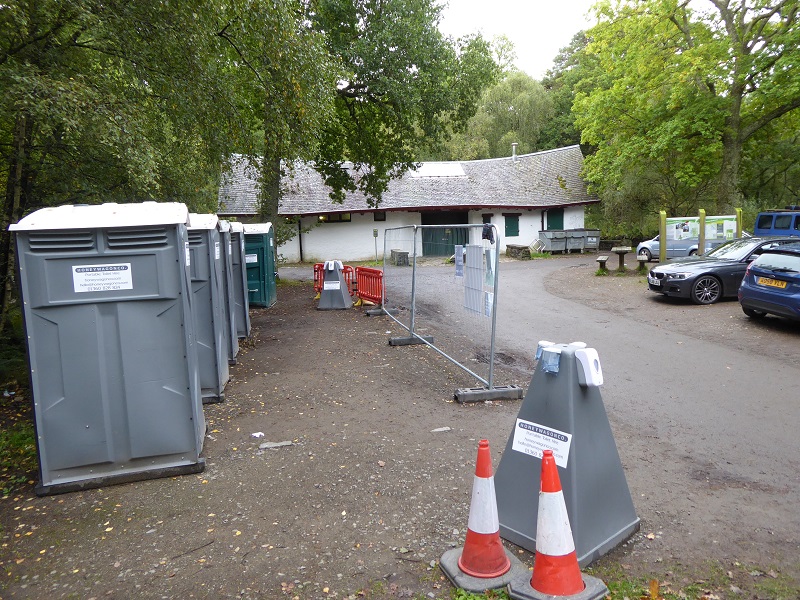
As a result of concerns about the safe use of public toilets, the LLTNPA was forced to hire mobile toilets. At the LLTNPA Board Meeting staff claimed these were very expensive. Actually, the cost, including weekly emptying, is £35 plus VAT. Not a lot to prevent visitor hotspots from being covered in human excrement.
But why continue to provide mobile toilets outside existing toilet blocks when they could be far better used in places like the Cobbler car park in Arrochar or on south Loch Earn, where the LLTNPA closed its largest camping management zone due to the volume of human waste? Indeed, while I disagree with the camping byelaws, if the LLTNPA had added a couple of places to each camping permit area to meet increased demand, it could have paid for mobile toilet provision.
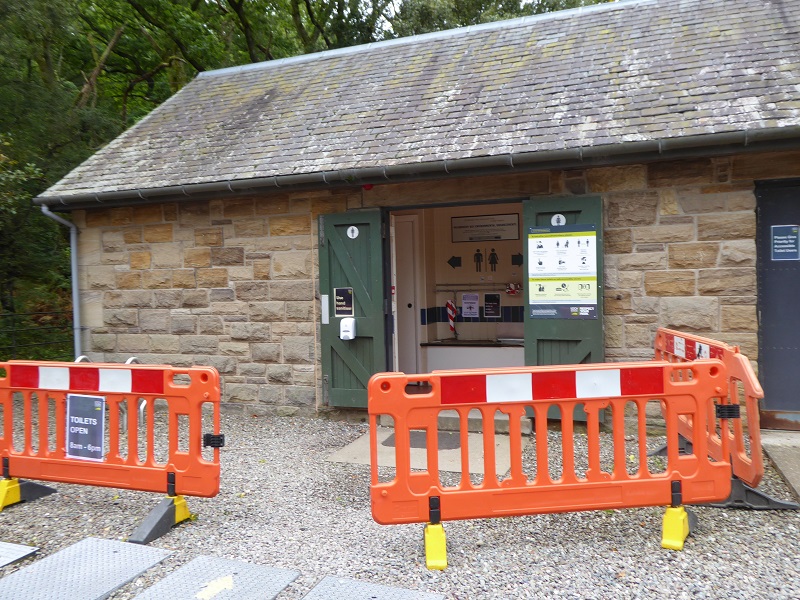
Why, if the LLTNPA can keep the toilets at Milarrochy safely open, couldn’t it do so at Rowardennan or indeed Balmaha? Is there any rational explanation for the sign on the toilet block doors at Rowardennan? 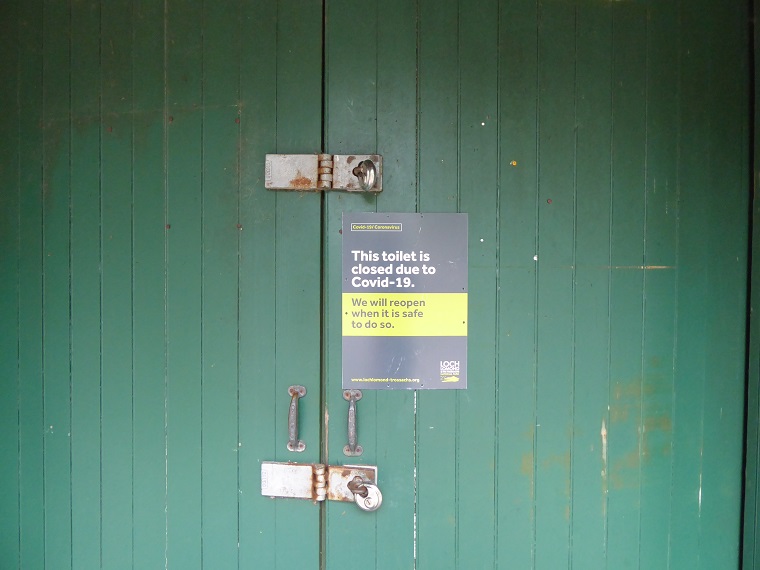
If people can queue outside for one toilet, they can queue for another.
Having wasted resources over the summer, the LLTNPA is now proposing to return to business as usual:
“Following the post-lockdown rush and in line with our usual seasonal practices, some of theses (sic) facilities will shortly begin to close and temporary toilets will be removed. However due to the increased demand anticipated during the autumn, this may be later than usual in some locations. More information on toilet provision during the autumn and winter months will soon be available on our website.”
It should be obvious that the LLTNPA needs to keep ALL its toilets open over the winter. It also needs to consider other popular places where fixed provision needs to be supplemented by mobile toilets, such as Duck Bay or the Ben Venue and Ben A ‘an car parks.
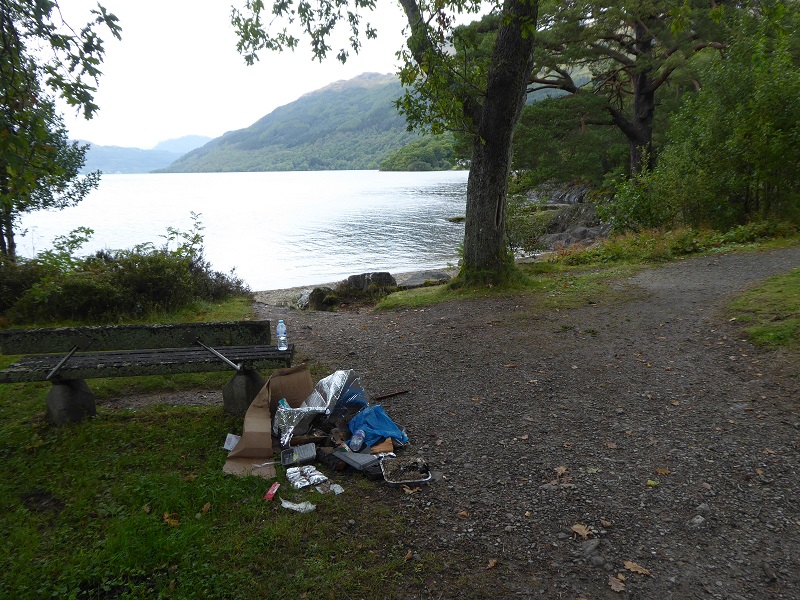
The worst example of littering I came across was at Rowardennan. Instead of imploring people to take their litter home, we need to understand why some people do this. If it was the litterers who had piled up the rubbish, why they didn’t take their litter over to the large bins which Stirling Council, to their credit, provide by the toilet block? Perhaps the people didn’t realise there were any bins, or perhaps, having forgotten to take a bag to put the litter in, they didn’t want to make multiple journeys to the bins (maybe 80 metres away)?
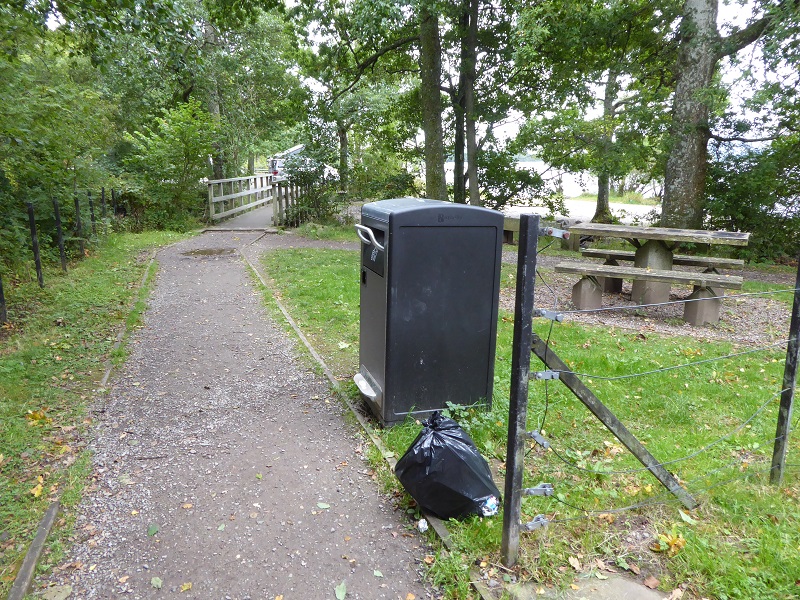
The evidence suggests that large bins in places where people might have significant amounts of rubbish are part of the answer. Industrial size bins, as someone pointed out recently in a parkswatch comment, are common in the Alps. They not be pretty but they don’t limit what rubbish can be disposed of and, as a consequence, there is far less “fly tipping”.
At the Board Meeting the LLTNPA’s Litter Prevention Manager, in response to a question, clarified that anything over one bag of litter – as in pile of litter at Rowardennan or an abandoned tent – is classified as fly tipping. This distinction appears to be causing some of the problems and buck passing. The LLTNPA sees its role as limited to providing for litter disposal on its sites, hence the small bins or bins with small opening. It won’t provide larger bins because of all the other rubbish that it might have to pay to dispose of given cuts in local authority provision. The wider issue is that the LLTNPA has proved itself incapable of persuading its partners to agree a joined up approach to litter across the National Park
In the paper accompanying the Litter Prevention Strategy (see here) staff stated:
“Falls of Falloch alone accumulating over 130 bags of litter in the period before travel restrictions we lifted; the equivalent to an additional 260 (80 litre) bags of litter in July compared to July 2019 recorded as part of our Ranger patrols, and in two days at the start of August with the assistance of 4 volunteers, Rangers and Land Operations collecting 81 additional bags of waste on top of routine litter picking services.
I pointed out to the Board that the 130 bags of litter at Falls of Falloch was almost double the 73 bags that were collected in two whole wards of the Cairngorms National Park over the summer (see here). The difference is that in the Cairngorms National Park there are litter bins. The Litter Prevention Manager responded later in the meeting by claiming this amount of litter would require 9-10 bins at the Falls of Falloch and this would impact on the 15 car parking spaces there. Just how such a limited number of cars could generate such an enormous amount of litter was never explained. My suspicion is that much of it was fly tipping due to dumps being closed. Whatever the explanation, the cost in staff time to pick it all up and then transport is elsewhere must be far greater than the cost of emptying bins.
Board Members did make a number of pertinent comments on the Litter Prevention Strategy. Martin Earl asked what other agencies were doing to extend facilities opening over the winter? (Gordon Watson didn’t have “the picture”). David McCowan asked what the cost would be of comprehensive litter provision? The response was the cost would be so much it was not even worth calculating. (That seems unlikely as if suitable bins were provided littering would drop dramatically and so would the costs of clear-up). Sarah Drummond pointed out that litter enforcement takes a huge amount of time. (By implication, that time that would be better spent emptying bins). Bob Darracott pointed out that the National Litter Strategy, which the Board strategy is supposed to support, is now well out of date.
In responding to my presentation in the morning and the debate, Simon Jones, the Park’s Director of Conservation, made two excellent points. The first was that without more resources, the National Park is simply moving the pieces around. The second agreed with a point I had made, that staff don’t have enough clout to negotiate a joined up approach with other public authorities and therefore Board Members need to get involved.
Unfortunately, after offering their thoughts, Board Members changed nothing in the papers and made no commitment to getting involved. The Litter Prevention Strategy, delivered seven years after it was first promised, commits to nothing except more of the same. Staff will now commence on some action plans for next year instead of drawing up a case for the resources that are really needed and preparing a negotiation brief for Board Members.
As a consequence, it is predictable that the visitor management chaos and wasted opportunities in places like east Loch Lomond will continue. It is time the LLTNPA dusted down its Visitor Management Plans for east Loch Lomond, which formally expired in 2019 but was effectively abandoned without public debate several years ago, and used this as a basis for developing a multi-agency plan to address the gaps in visitor infrastructure there: parking capacity and the provision of public transport; camping capacity, toilet provision; and waste disposal. Until this happens, this will continue to be the National Park whose only answer is to say “No” and “Don’t”.
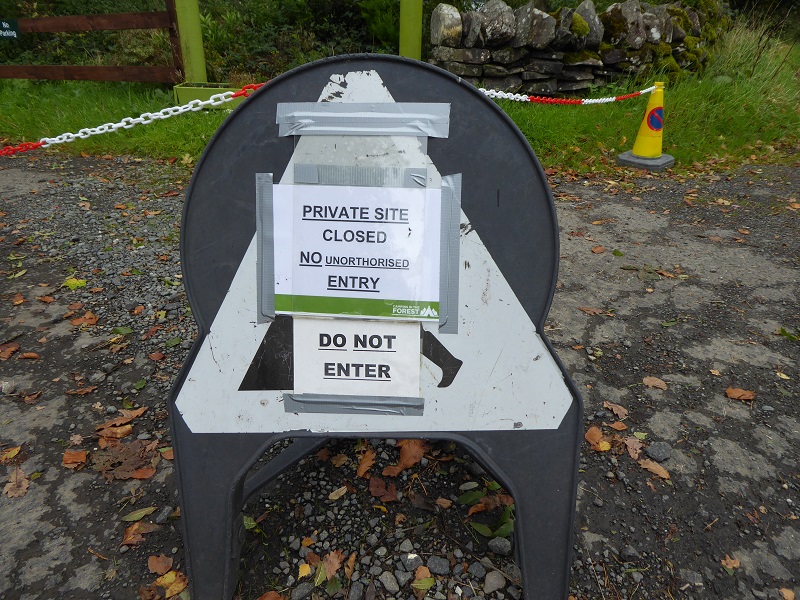
On Sunday their was 4 traffic wardens walking round Balmaha car park ticketing cars A guy walking around the boat yard stoping people from coming along side the moorings The boat yard pathway still closed off . At Duncan Mills Slipway no lighting in the car parks, people trying to launch and load boats on trailers people trying to drive cars with trailers and boats out the carpark in pitch darkness with people walking through the carpark coming from the beach or walking their dogs The LLTNPA is real not fit or proper
The boat yard at Balmaha is a private business – and the general public have no right of access – this is made clear on the signage to the boatyard and on the jettys. The public pier is further along the road at the end of the point – but despite all the LLTNPA signage to say that piers and jettys are for drop off only – this is not being enforced by the LTNPA and you will see boats tied up for long periods restricting access.
But the issue Ian, which I tried to put in the piece, is where should the boundary to the boatyard is in terms of the exercise of access rights? I am not sure many sheriffs would see large oak trees as being an integral part of boatyards whereas clearly jetties, slipways, working areas are.
Shocking. As an album to attract people from other regions to come to enjoy the LLTNP Nick’s post tells a sorry story. As an album to reveal how much some leading Scots really care for their homeland, it is quite damning. What a mess . You could almost feel the dereliction has been allowed to happen. Fenced and coned off areas, crumbling roadways and structures, blocked points of access, careless routines for land management and scores of keep off /keep out notices. In any other place this level of abandonment would herald some deliberate attempt to down value,by permitting the trashing of a capital asset. Similar sights are prelude to an property being flogged off on the cheap for redevelopment. Yet here we all know this decay is a consequence of a publicly funded, deliberate management policy: the level of decay either wholly intentional,or, negligent. In many other parts of Europe any property owner or business who let their community down, by failing to maintain and keep tidy the area they owned or were responsible for, would be served with an enforcement notice. If they failed then to take steps to restore the asset , a notice to repair would be issue prior to repair at public expense with those repair costs billed to the owner. The final sanction would be sale of the asset with accrued public costs recouped at compulsory auction. ( Not a legal possibility across Scotland.) However there is a group of us (the Scottish public) are indeed responsible to everyone for the proper management of this national park. When those selected show they don’t care… arguably we are all to blame for rewarding them and allowing them to continue in public office. ?
Keep Scotland Beautiful has got a past. Keep America Beautiful originally, it was set up by the big packaging and container companies….to “promote public trust and confidence” and all that jazz. The cigs/drink cos were getting a bad press about the 1950-60’s because all of their industry garbage was littering the land. Fearing liability and reputational damage they decided to pass the buck on to the consumer. Yip! Cue the suckers who think they are acting in good faith litter picking for KSB, their sponsors and partners like WDC and the NP. Oh! No, don’t blame us industry….get the national/local press to blame the unruly plebs. Rub in the emotional blackmail and make them clean up the mess the giant transnational global corps made in the first place. Plastic=profit maximisation/externalise the costs. Let the mugs pay…twice! Oh! You thought it was all about “nature conservation?” So it was…it costs to run a 25 room penthouse on Park Avenue. LOL! Hurry up! I’m going to be dead before the penny drops around here. This “NP” was a pack of lies in 1998 and that’s snowballed over the last 22 years. Countless £millions of public money have been squandered with nothing to show for it.